ExoClock counts down Ariel exoplanet targets
Sunday, 25 September 2022 17:32 Details of the orbits of 450 candidate exoplanet targets of the European Space Agency's Ariel space mission have been presented this week at the Europlanet Science Congress (EPSC) 2022, and submitted for publication in the Astrophysical Journal Supplement Series. The study, coordinated by the ExoClock (www.exoclock.space) project, has been co-authored by 217 professional and amateur astronomers,
Details of the orbits of 450 candidate exoplanet targets of the European Space Agency's Ariel space mission have been presented this week at the Europlanet Science Congress (EPSC) 2022, and submitted for publication in the Astrophysical Journal Supplement Series. The study, coordinated by the ExoClock (www.exoclock.space) project, has been co-authored by 217 professional and amateur astronomers, Mysterious ripples in the Milky Way were caused by a passing dwarf galaxy
Sunday, 25 September 2022 17:32 Using data from the Gaia space telescope, a team led by researchers at Lund University in Sweden has shown that large parts of the Milky Way's outer disk vibrate. The ripples are caused by a dwarf galaxy, now seen in the constellation Sagittarius, that shook our galaxy as it passed by hundreds of millions of years ago.
Our cosmic home, the Milky Way, contains between 100 and 400 billion st
Using data from the Gaia space telescope, a team led by researchers at Lund University in Sweden has shown that large parts of the Milky Way's outer disk vibrate. The ripples are caused by a dwarf galaxy, now seen in the constellation Sagittarius, that shook our galaxy as it passed by hundreds of millions of years ago.
Our cosmic home, the Milky Way, contains between 100 and 400 billion st mu Space and SpaceBelt to develop constellation for Data-Security-as-a-Service
Sunday, 25 September 2022 17:32 Satellite manufacturer and service provider mu Space Corp and space-based service with secure cloud data storage provider, SpaceBelt have agreed a Memorandum of Understanding entered on the 16 of August 2022. Both parties firmly believe they can bring their own expertise to the project in order for it to succeed and benefit from the collaboration, with plans to have a commercial agreement toward
Satellite manufacturer and service provider mu Space Corp and space-based service with secure cloud data storage provider, SpaceBelt have agreed a Memorandum of Understanding entered on the 16 of August 2022. Both parties firmly believe they can bring their own expertise to the project in order for it to succeed and benefit from the collaboration, with plans to have a commercial agreement toward ATLAS awarded SBIR contract for space domain awareness
Sunday, 25 September 2022 17:32 ATLAS Space Operations, the leading provider of Ground Software as a Service (GSaaS), has announced the award of a Small Business Innovation Research (SBIR) Phase II award to develop their Space Domain Awareness (SDA) capabilities. This effort will use ATLAS software and hardware to increase ATLAS' ability to conduct passive RF observations of on-orbit assets.
To deliver on the milestones
ATLAS Space Operations, the leading provider of Ground Software as a Service (GSaaS), has announced the award of a Small Business Innovation Research (SBIR) Phase II award to develop their Space Domain Awareness (SDA) capabilities. This effort will use ATLAS software and hardware to increase ATLAS' ability to conduct passive RF observations of on-orbit assets.
To deliver on the milestones DART on track for asteroid collision
Sunday, 25 September 2022 14:52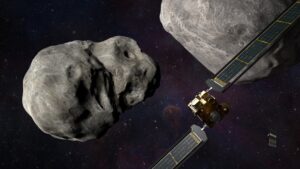
A NASA spacecraft is on course to deliberately collide with a small asteroid Sept. 26 to test how that technique could be used to deflect a potentially hazardous asteroid.
The post DART on track for asteroid collision appeared first on SpaceNews.
NRO satellite flies to orbit in Delta 4’s final West Coast launch
Saturday, 24 September 2022 22:12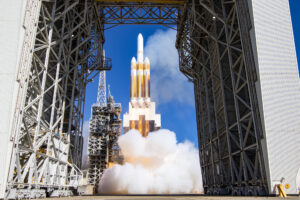
ULA launched a classified National Reconnaissance Office spy satellite on a Delta 4 Heavy rocket September 24 at 3:25 p.m. Pacific from Space Launch Complex-6 at Vandenberg Air Force Base, California.
The post NRO satellite flies to orbit in Delta 4’s final West Coast launch appeared first on SpaceNews.
NASA scraps Tuesday Moon launch due to storm
Saturday, 24 September 2022 15:13
NASA has called off the scheduled Tuesday launch of its historic uncrewed mission to the Moon due to a tropical storm that is forecast to strengthen as it approaches Florida.
After two previously canceled launch attempts, NASA is weighing returning the Artemis 1 mission rocket to its assembly site under the threat of extreme weather.
"NASA is forgoing a launch opportunity... and preparing for rollback (from the launchpad), while continuing to watch the weather forecast associated with Tropical Storm Ian," it said on Saturday.
The US National Hurricane Center (NHC) said Ian is due to "rapidly intensify" over the weekend as it moves toward Florida, home to the Kennedy Space Center, from which the rocket is set to launch.
NASA postpones Artemis 1 launch because of tropical storm
Saturday, 24 September 2022 15:05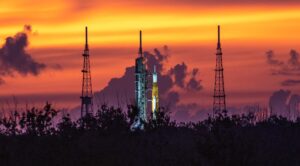
NASA has called off plans to attempt to launch the Artemis 1 mission on Sept. 27 as a tropical storm, with the potential to become a major hurricane, heads for Florida.
The post NASA postpones Artemis 1 launch because of tropical storm appeared first on SpaceNews.
Neptune and rings shine in photos from new space telescope
Saturday, 24 September 2022 13:40
Approaching storm may delay launch try for NASA moon rocket
Friday, 23 September 2022 18:49
An approaching storm threatens to delay NASA's next launch attempt for its new moon rocket, already grounded for weeks by fuel leaks.
Avanti turns to regional operator partnerships to expand satellite coverage
Friday, 23 September 2022 17:49
U.K.-based Avanti Communications is seeking more partnerships to grow its footprint after securing its first major deal to use another regional satellite operator’s capacity.
The post Avanti turns to regional operator partnerships to expand satellite coverage appeared first on SpaceNews.
NASA updates exploration objectives
Friday, 23 September 2022 16:51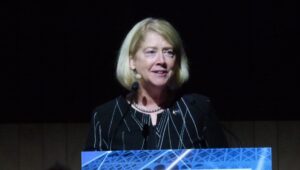
NASA has revised and expanded a set of objectives it will use to guide its architecture for lunar and Mars exploration after receiving volumes of feedback from commercial and international partners.
The post NASA updates exploration objectives appeared first on SpaceNews.
NASA says test good enough to try for Artemis launch next week
Friday, 23 September 2022 15:36
NASA announced Thursday that the cryogenic fueling test this week at Kennedy Space Center did well enough to keep moving toward a launch attempt as early as Tuesday.
"Based on data from the test, teams are fine-tuning procedures for the next launch opportunity, targeted for no earlier than Sept. 27," reads a statement on the NASA website. "The rocket remains in a safe and flight-ready configuration at the launch pad."
The nearly 10-hour test at Launch Pad 39-B on Wednesday saw several issues with liquid hydrogen leaks, some similar to what caused a scrub on the last attempt to launch on Sept. 3.
But mission managers were able to troubleshoot and push through to accomplish all the goals for the test setting the rocket up for what would be its third attempt to get off the ground.
ULA’s Delta 4 prepares for final West Coast launch as Vandenberg seeks new tenants
Friday, 23 September 2022 14:03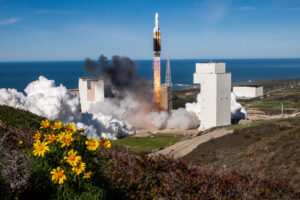
After completing the NROL-91 mission, ULA will start vacating SLC-6 and consolidate operations at SLC-3
The post ULA’s Delta 4 prepares for final West Coast launch as Vandenberg seeks new tenants appeared first on SpaceNews.
NASA gears up to deflect asteroid, in key test of planetary defense
Friday, 23 September 2022 13:14 Bet the dinosaurs wish they'd thought of this.
NASA on Monday will attempt a feat humanity has never before accomplished: deliberately smacking a spacecraft into an asteroid to slightly deflect its orbit, in a key test of our ability to stop cosmic objects from devastating life on Earth.
The Double Asteroid Redirection Test (DART) spaceship launched from California last November and is f
Bet the dinosaurs wish they'd thought of this.
NASA on Monday will attempt a feat humanity has never before accomplished: deliberately smacking a spacecraft into an asteroid to slightly deflect its orbit, in a key test of our ability to stop cosmic objects from devastating life on Earth.
The Double Asteroid Redirection Test (DART) spaceship launched from California last November and is f 
